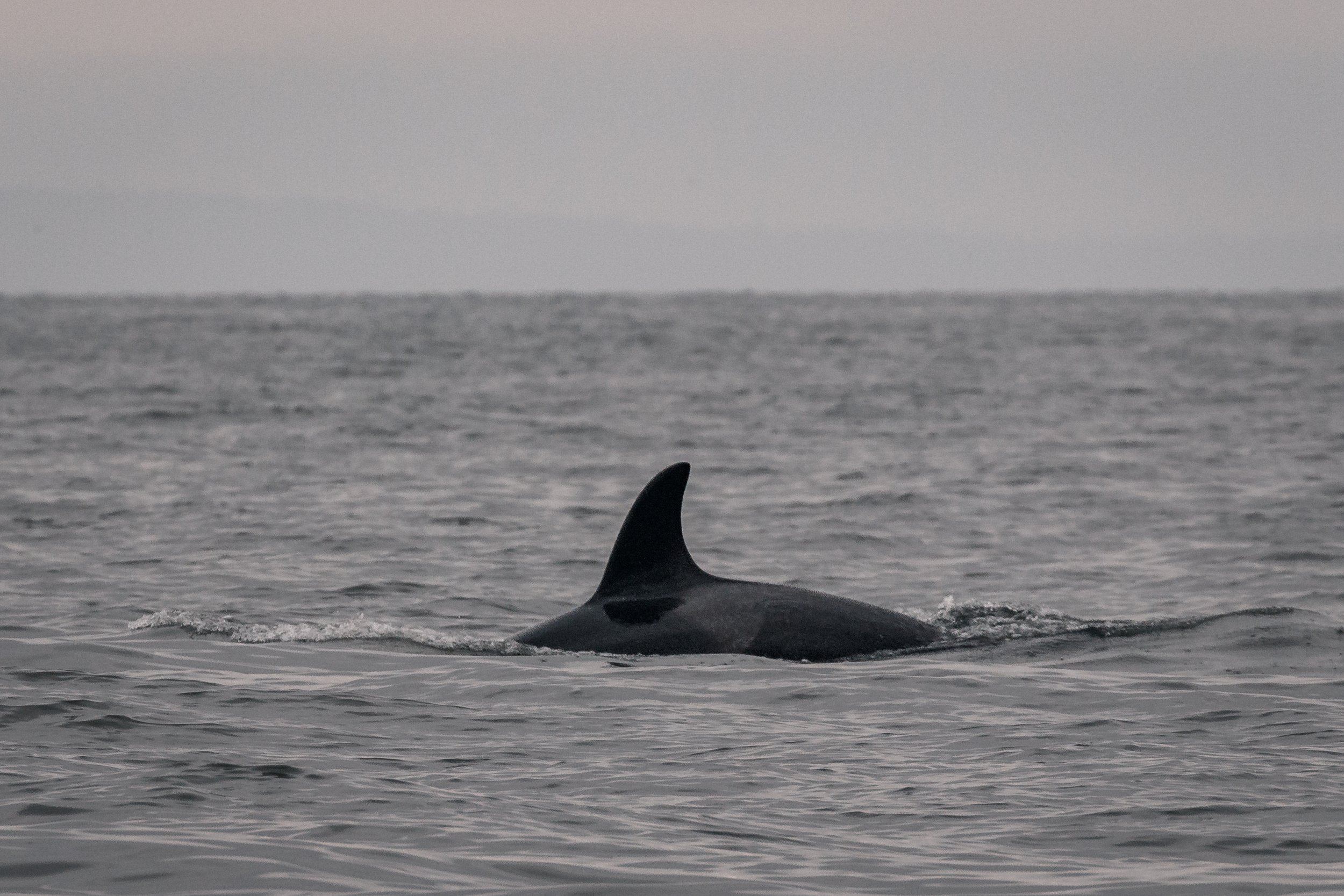May 4, 2022 - The FORTH was with us today
Today we travelled in our open vessel, Keta. Our captain was notified of a Humpback Whale off Thrasher rock just east of the southern tip of Gabriola Island. By the time we were in the area, the Humpback whales had made their way into the Strait of Georgia. We finally caught up and watched as Dalmatian and friend leisurely travelled southeast down the strait.
Humpback whales have a cosmopolitan distribution, meaning that they are found worldwide. Though they are mostly solitary whales, they will from time to time travel in small groups consisting of two or three individuals. These associations from hours to days, if not longer, especially in feeding or breeding areas. Larger congregations will form when feeding, especially if bubble-net feeding occurs. However, this technique of corralling their prey is a relatively new and under-studied feeding technique - many of our whales seem to still prefer using other feeding techniques. Bubble-net feeding is a technique where a group of whales would dive and once a school of fish is found they would encircle the schooling fish with bubbles released from the blowhole of one of the whales. The bubbles create a barrier, the bubble-net, that the fish are unable to cross. Once they are ready the whales would synchronously race up, opening up their mouths and engulfing the fish.
After watching the two Humpbacks for a while we made our way across the Strait of Georgia to the tip of Lighthouse Park on the mainland. The Strait of Georgia is ecologically significant and a biologically rich area. This is an important region for various species that live and migrate through it. The area receives its nutrients from the various river outflows, especially the Fraser River, which plays a vital role in the ecosystem of the Strait of Georgia. It provides many nutrients, especially nitrates, which are used by phytoplankton for primary production.
At the tip of Lighthouse Park, we came across a few Transient Killer Whales. The T023D’s (with matriarch T023) and T124C were hugging the shores and circling the rocks as they were looking for prey. Transient Killer Whales can travel over 100 km in a day and on average travel 12 km/hr but they can travel up to 50 km/hr when hunting. Killer whales typically dive between 30 - 100 m deep but can dive deeper if they are chasing prey. When larger marine mammals dive they reduce their heart rate to between 30% and 50% of their regular heartbeat and if the killer whale is going to do a deep dive, it will collapse its lungs to prevent damage from the pressure during the deep dive. Some mammals, such as harbour seals, can reduce their heartbeats from around 100 BPM down to 10 BPM - that is an incredible 90% reduction!
Today’s photos are by Marine Naturalist Janine Van Der Linden.
Dalmatian (KEX0024) and friend














